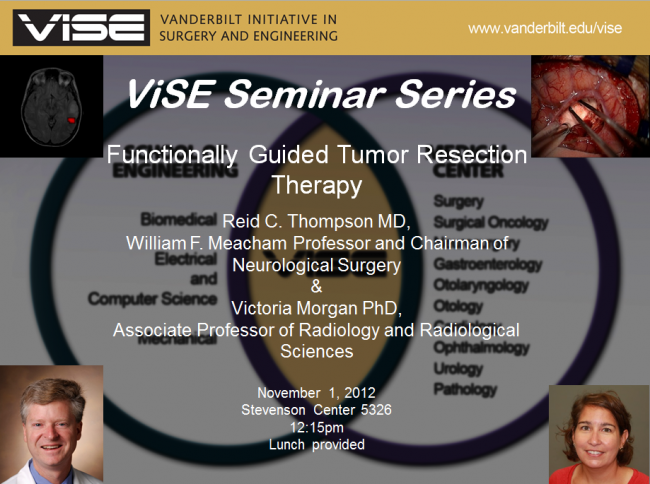ViSE Seminar: Functionally Guided Tumor Resection Therapy: SC 5326, Nov 1, 12:15PM. Lunch provided.
Abstract
One of the significant challenges faced by neurosurgeons is the treatment of patients with primary infiltrating brain cancers. These cancers invade the normal brain. The identification and localization of these neoplasms is difficult because the margins are indistinct. Because patient’s outcomes are closely linked to the degree of surgical resection, the development of strategies designed to identify tumor margins and optimize safe, image complete surgical resection are of critical importance. The goal of any brain tumor surgery is to maximize the safe resection of the tumor – and to preserve neurologic function. Thus, while anatomic localization and identification of tumors in the brain is critical – it is also important to identify areas of functional significance such as language and motor pathways. Advanced imaging modalities now make it possible to identify areas of functional significance preoperatively and non-invasively. Functional Magnetic Resonance Imaging (fMRI) is a non-invasive method to localize brain regions used to perform a specific task. One of its most promising clinical applications is to map eloquent cortex for the pre-surgical evaluation of primary brain cancer patients. Although this procedure requires some specialized hardware and analysis software, it is becoming more routine in large academic medical centers. This lecture will focus on the basic clinical aspects of patients with primary brain tumors and present some of challenges that neurosurgeons face in treating these patients. We will also describe the analysis “pipeline” used currently at Vanderbilt which merges research and clinical resources. We will discuss the mechanism of the fMRI signal and how this translates to potential benefits and limitations of this method. Finally, some useful quality metrics of fMRI data, possible alternatives and validation methods will be described.

